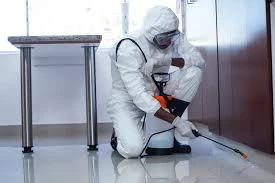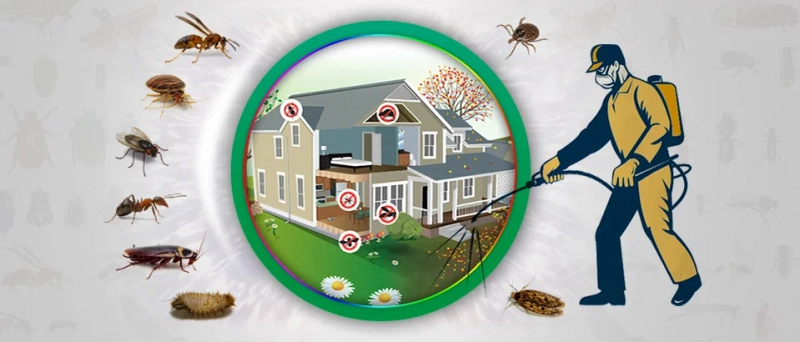Introduction
When you think about a comfortable home, pest control probably isn’t the first thing that comes to mind. But the truth is, managing pests is a key part of maintaining a safe, hygienic, and damage-free household. Pests such as termites, ants, roaches, rodents, and bed bugs don’t just cause discomfort; they can also damage property, spread disease, and create long-term problems if not addressed promptly and effectively.
This article explores why residential pest control is essential, the types of pests commonly found in urban environments, what homeowners can expect from professional services, and how to choose the right provider. Whether you’re dealing with an ongoing infestation or simply looking to prevent future issues, having the right knowledge can make all the difference.
Why Pest Control is Crucial for Residential Properties
Urban areas, with their dense populations and older infrastructure, create the perfect conditions for pests to thrive. From roaches hiding in the cracks of kitchen cabinets to rodents nesting in basements, infestations can quickly spiral out of control. The risks extend beyond minor annoyances.
Pests like cockroaches can trigger asthma and allergies, especially in children. Rodents can chew through wires, increasing the risk of electrical fires. Termites can silently destroy wood structures from within, costing homeowners thousands in repairs. Even pests that seem harmless, such as ants, can contaminate food sources and attract larger threats.
Proactive pest control not only helps manage existing issues but also acts as a protective barrier against potential infestations. Seasonal inspections and treatments can ensure that your home remains a secure and healthy environment for your family.
Common Household Pests and the Dangers They Pose
It’s essential to understand the pests most frequently encountered in residential spaces, especially in cities and older buildings. Each comes with its unique set of challenges:
1. Termites
These silent destroyers can feed on wood unnoticed for years. By the time they’re discovered, the structural damage is often extensive. Subterranean termites, in particular, are known for forming large colonies and feeding on foundations, joists, and even drywall.
2. Rodents
Mice and rats are common in both city apartments and suburban homes. They carry diseases such as leptospirosis and hantavirus, and their constant gnawing can damage electrical wiring, insulation, and plumbing.
3. Cockroaches
These pests are not just unpleasant to see—they can spread bacteria, contaminate food, and trigger allergic reactions. German and American cockroaches are especially resilient and often difficult to eradicate without professional help.
4. Bed Bugs
Once considered almost extinct in the U.S., bed bugs have made a strong comeback. They feed on human blood and are notoriously hard to remove because of their small size and resistance to many over-the-counter treatments.
5. Ants
Although they may seem harmless, ants can contaminate food, damage property, and attract other insects. Carpenter ants, for instance, tunnel through wood and can weaken structures in a similar manner to termites.
What to Expect from Professional Pest Control Services
Professional pest control providers do more than just spray insecticide. Today’s services are thorough, environmentally conscious, and customized to the specific conditions of each property. Here’s what most homeowners can expect during the process:
Initial Inspection
The first step involves a detailed inspection of your property, including basements, attics, crawl spaces, and outdoor areas. Technicians look for signs of infestation, entry points, moisture problems, and other vulnerabilities.
Pest Identification
Not all pests are created equal. Correctly identifying the species present is critical to applying the appropriate treatment. For example, different ant species respond differently to bait, and not all roaches are susceptible to the same control methods.
Treatment Plan
After diagnosis, a comprehensive treatment plan is developed. This may include baiting, spraying, sealing entry points, and using traps. Some infestations may require more than one treatment cycle, especially if eggs or larvae are present.
Follow-up and Monitoring
The best pest control companies schedule follow-up visits to ensure the infestation has been fully eradicated. Many also offer monitoring services, especially for properties with a history of recurrent pest issues.
Prevention Recommendations
In addition to treatment, professionals often provide tips for preventing future infestations. This might include improving ventilation, sealing cracks, managing trash disposal, and modifying landscaping.
Eco-Friendly and Family-Safe Options
One concern many homeowners share is the safety of pest control treatments, especially in households with children or pets. Fortunately, the industry has evolved significantly over the past decade. Modern pest control practices now emphasize Integrated Pest Management (IPM), which combines chemical and non-chemical solutions in a way that minimizes risk to humans and the environment.
Non-toxic bait, heat treatments, diatomaceous earth, and botanical insecticides are just a few of the options available today. These methods target pests specifically while keeping your family and pets safe.
Cost Factors and Value of Service
Pest control pricing can vary widely depending on the type of pest, the severity of the infestation, and the size of the home. Single treatments for ants or cockroaches may cost between $100 and $300, while more complex services like termite control can run into the thousands. However, these costs should be viewed in the context of the damage pests can cause if left unchecked.
Investing in regular pest control services often proves more economical in the long run. Not only do you avoid expensive repairs, but you also gain peace of mind knowing your home is protected.
Real-World Example: Dealing with Seasonal Infestations in Brooklyn
In densely populated urban settings like Brooklyn, pests are more than just a nuisance—they’re a persistent part of daily life. Older buildings, shared walls, and tight living conditions make it easy for infestations to spread rapidly from one unit to another.
For residents seeking professional pest control Brooklyn NY, local services understand the specific challenges posed by the area’s infrastructure. These providers are skilled at treating common urban pests like rats, roaches, and bed bugs with targeted approaches designed for multi-unit dwellings. Timely intervention, paired with building-wide coordination, often leads to more effective outcomes.
Navigating Specific Pest Problems: Focus on Ants
Among the many pest issues that homeowners face, ants are particularly frustrating. Their small size allows them to slip through even the tiniest openings, and once they find a food source, they can form extensive trails and colonies. Kitchens and bathrooms are the most common areas where ant problems start, due to the presence of moisture and food crumbs.
Many people begin their search with terms like ant pest control near me, especially during warmer months when ant activity peaks. While DIY treatments may work temporarily, professional help is often needed for lasting results. Experts can identify the species, locate the nest, and apply targeted solutions that eliminate the problem from the source.
Choosing the Right Pest Control Company
With so many providers available, selecting the right pest control service can feel overwhelming. Here are some key factors to consider:
Experience and Licensing
Make sure the company has certified and experienced technicians. Licenses ensure compliance with state and federal regulations.
Reputation and Reviews
Check online reviews, testimonials, and ratings. Word of mouth is often a reliable indicator of service quality.
Customization
Every home is different. Avoid one-size-fits-all solutions. Good companies conduct a detailed assessment before recommending a treatment plan.
Transparency
Look for providers who are clear about their pricing, procedures, safety measures, and follow-up policies.
Guarantee
Some companies offer guarantees or warranties for their services. This can be a good sign of their confidence in long-term results.
Prevention Tips for Long-Term Peace of Mind
Even after treatment, homeowners should take proactive steps to reduce the chances of re-infestation. These simple practices can go a long way:
- Seal cracks and gaps in walls, windows, and doors.
- Keep food in airtight containers.
- Clean spills and crumbs immediately.
- Dispose of garbage regularly and properly.
- Eliminate standing water in sinks, tubs, and outdoor containers.
- Trim vegetation away from the home’s exterior.
Conclusion
Pest control is more than a reactive service—it’s a critical aspect of responsible homeownership. From protecting your health to preserving your property, the value of professional pest management cannot be overstated. Understanding the risks, knowing what to expect, and choosing the right provider will empower homeowners to take control of their environment.
As urban living continues to grow, so does the need for reliable and intelligent pest control solutions. Investing in these services today ensures a safer, cleaner, and more comfortable home for years to come.


